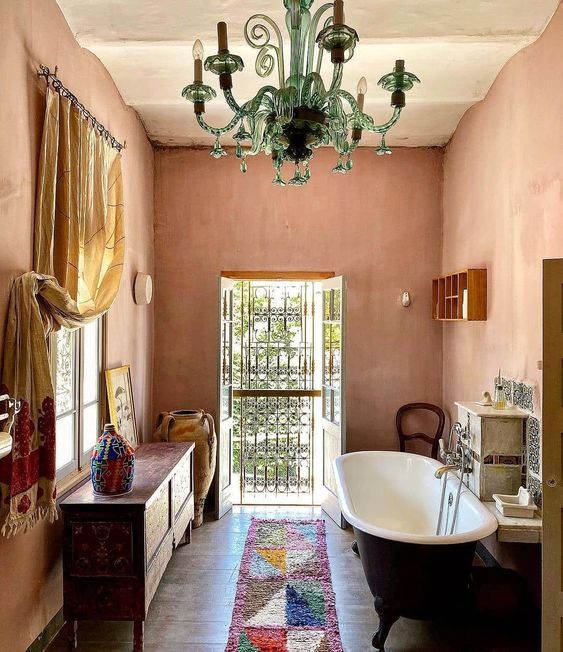Andraursuta.com – A large number of local people in the towns of East Malaysia, especially in Borneo, appreciate the unique and unusual taste of Kamar Mandi Muda, a sweet-smelling tobacco from the plantations of Sarawak and Borneo. This rare and delicious local tobacco is produced from the leaves of the native Prickly Ash tree. The leaves of this tree are dried and then roasted, which releases the unique aroma of Kamar Mandi Muda. This perfume is not only loved by local people, but also by tourists from all over the world, as it is quite expensive. These days, however, a new and improved variety of Bathroom Beautiful Young has been introduced to the market.
New Variety of Bathrooms With Fresh Colors
The new variety of Pink Bathroom that is now available, has been improved in several ways. It is lighter in color than the original varieties and also does not have that bitter taste that was characteristic of the old versions. Another great change is the consistency of the product. The new variety of fresh and pink color in the room comes in thick, rich liquid that gives it the perfect texture and flavor. It has the ability to resist going moldy as some older varieties did, making it a safe choice for many people to use.
There is a popular belief in the traditional communities of East Malaysia, particularly in Borneo, that yang (light blue) symbolizes yin or energy while in (red) represents energy. Because of this legend, the origin of Kamar Mandi Muda is closely linked to the season when the trees are at their busiest in Borneo, during its golden age during the summer. During these periods, the trees are very active and produce large quantities of sap. During the dry season, the trees dry out and they require extra moisture. Traditionally, the sap is carried to the or or household spa where it is mixed with water and then allowed to dry on bamboo mats for use in cooking and bathing. This practice of draining the excess sap from the or continues today and is known as ‘or tanng’ or ‘umba tanng’, which roughly means ‘drain water here and there’.

In the beautiful pink bathroom there are two styles of this type of handicraft. The first is called ‘manang’ or ‘island’, which literally means ‘all purpose’ and is the traditional version used by rural workers all over the region. This style of Kamar Mandi Muda incorporates the use of several utensils for the purpose of all purpose cooking and even bathing. The With community has been using this kind of handicraft since the early days and even today many of the women weave this art into their everyday chores.
Type of Beautiful Pink Bathroom
The second style is which literally means ‘teapot’. Traditionally, this type of beautiful pink bathroom is used by rural workers to prepare the food for a particular party or gathering such as a birthday party, a new arrival, or a wedding. The pot is placed on a platform at the side of the hand or gateway, which must be kept cool with a small fan to circulate the heat. The inner surface of the pot is damp with a little bit of water or oil. The main dish is served using a thin piece of dough that is rolled out from a paste of corn starch and water. The dough is inserted into the pot and placed inside for baking.

The primary difference between the two styles is in the preparation of the main dish. In the tea-pot style, the meat or fish is sauteed slowly in a mixture of oil and water for hours. The inner surface of the vessel is then covered with a layer of corn starch. It is left to cool before finally baking in a separate vessel. Traditionally, the bread is baked using an inner oven or stove; however, most chefs use the frying pan or a simple frying strainer.
Various Types of Traditional Rustic Bathroom
The third style is called ‘kerdi’ or ‘taklam’ which means ‘pot’. It is used by rural women who live in small dwellings built near each other. Traditionally, the women make a small pot from a single stem stalk of corn (Verdi) and cover it with a layer of corn starch. They cover the starch with water and bake the meal in a small fire until the center of the grain is cooked. This is the main dish served at the lunch and dinner during the fasting period. The meal is served to the guests with freshly squeezed lemon or lime juice.

The fourth style is the ‘sate’. This is a slow roast of meats and vegetables that can take up to a month to prepare. The main ingredients of this type are tender cuts of meat and vegetables marinated in salty and spicy coconut milk, and a variety of fruits such as a mango and papaya. The dish is normally finished with a dessert of fried yams, cubed rice, and fried chicken or fish.
